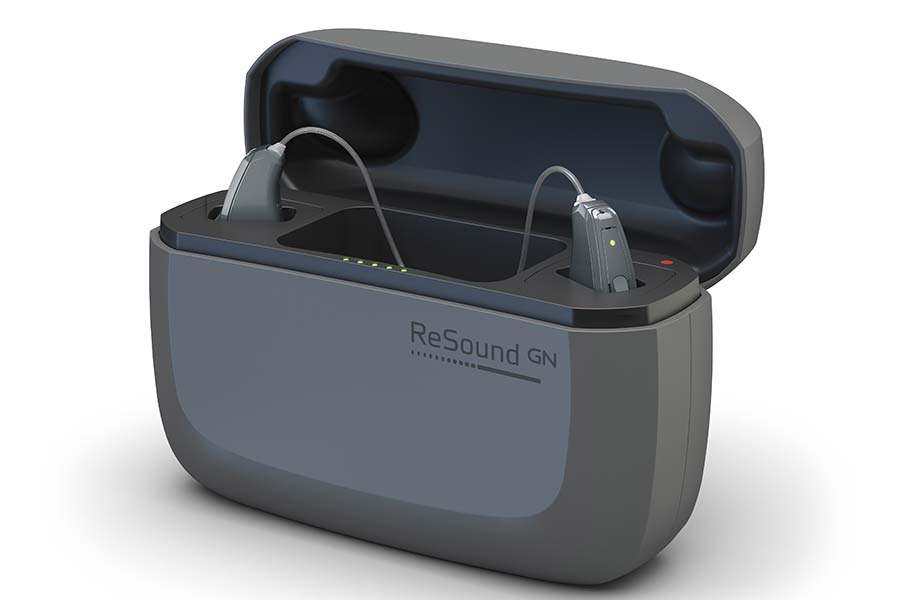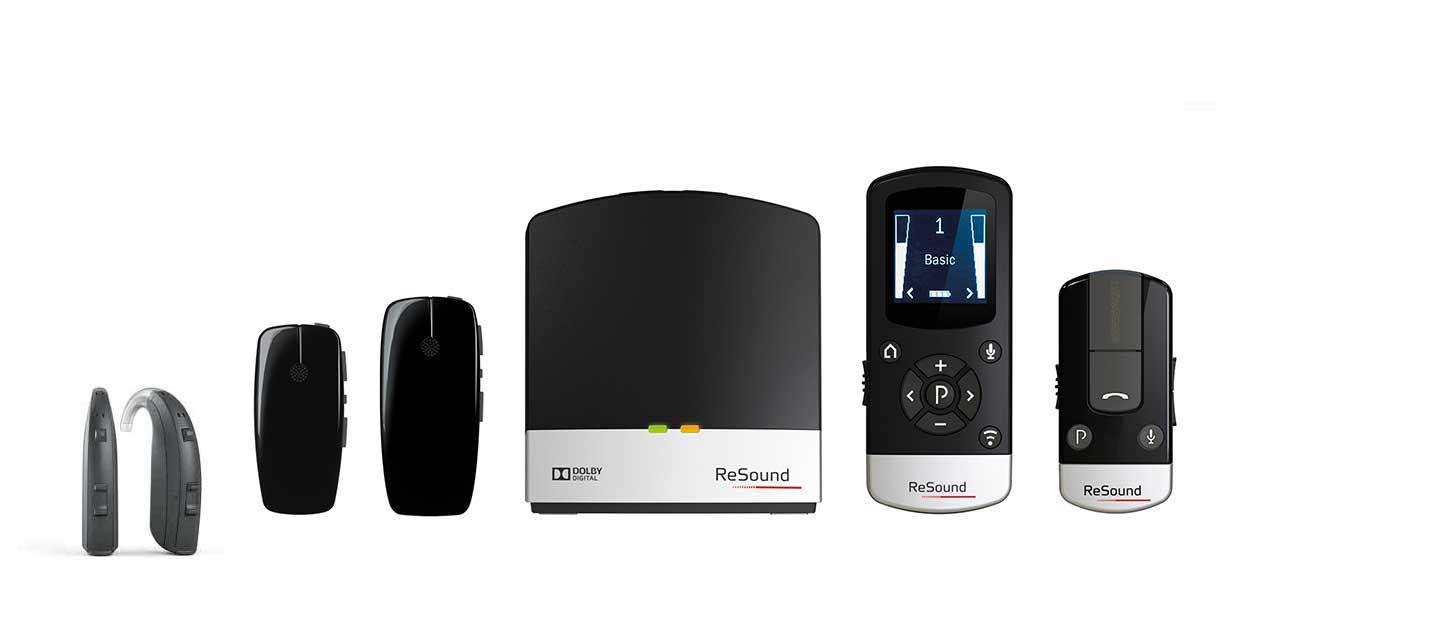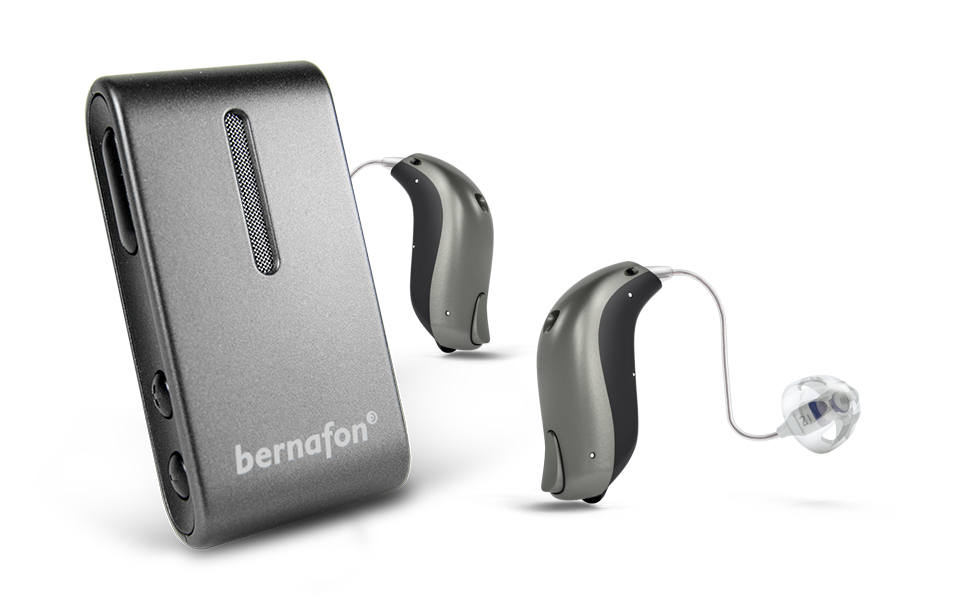Unfortunately, for some people hearing aids will never be enough to help them hear in every situation. No matter what level of hearing aid technology they buy, they will still have problems, sometimes even in moderately noisy situations. A recent conversation with a US colleague spurred me on to begin writing about this issue. I hope that this introduction will be just the first element of a section on Know devoted to what you can do when hearing aids are not enough. Firstly what I want to do is discuss speech discrimination and why people may have these problems, then I want to very quickly touch on strategies that may help. As I said, this is just the beginning and I will expand this out into a full section that I hope will provide good info on what you can do if you face this problem.

Modern Hearing Aids
Hearing aids like the Oticon Opn and the new LiNX Quattro try to deliver the cleanest and most natural sound to you in order that you get the best possible chance at hearing what is being said. Unfortunately, sometimes that just isn't enough.
Why Would Hearing Aids Not Help?
There are two reasons why a set of hearing aids might not help you in certain situations, the first reason is that the level of technology you have bought was never designed to help you in that noisy environment. The second reason is a bit deeper than that and it involves what is going on in your mechanism of hearing and possibly your auditory cortex. Unfortunately, sometimes no matter what we do with the technology, your ability to understand speech in noisy situations may still be problematic.
Hearing aid technology has moved on so much that it is easy for us as professionals to lose sight of the fact that for some people, they won't work everywhere. I mean I get excited about hearing aid technology as it evolves and I really see the treatment benefits that the evolution of technology brings.
However, I need to remember that the revolution in hearing aid technology really only delivers big benefits to most of the people who need it, not all. In a general run of the mill hearing loss, a good set of hearing aids will work exceptionally well. Depending on the level of technology purchased, they will work well almost everywhere.
However, if you suffer from a hearing loss which is further compounded by a speech discrimination issue, well then even the finest hearing aids may not be enough for you. Let's talk about speech discrimination and why it matters to the outcomes that you will experience with hearing aids.
Speech Discrimination Score?
We measure your ability to hear sounds and that allows us to understand your hearing loss. However, it doesn't give us an indication of your ability to understand speech. In order that we understand your speech discrimination, we measure how well you understand what you hear when speech is loud enough to hear comfortably.
We measure speech discrimination in per cent terms, so if your discrimination scores are 100%, you understand every word that you hear. However, if your speech discrimination is 0%, you can’t understand a single word that is spoken, no matter how loud it is. It isn't very often that we see 0% scores from anybody with a normal, general run of the mill loss.
While hearing loss is a function of damage to your hearing mechanism (outer ear, middle ear and inner ear). Speech discrimination difficulties may not be. We believe that speech discrimination issues can be caused by damage to the outer and inner hair cells in the inner ear. However, there may be central auditory issues at play as well. In essence, the brain may not be sorting out the information as it should.
Generally, speech discrimination problems and hearing loss go hand in hand. However, even somebody with a severe hearing loss may have speech discrimination of 70 or 80%. Which at its basic level means that they understand four out of every five words if presented at the right volume.
Hearing loss levels are not a good indication of speech discrimination. Two people may have exactly the same hearing loss (unlikely but you know an example right) but have two completely different speech discrimination scores. The key to me blathering on here is this if you have a hearing loss and your discrimination is good (80% or higher), typically you will find hearing aids will work pretty damn well for you in most sound environments.
However, if your discrimination is very poor, well then hearing aids will not deliver everything that you need to hear better in complex situations (noisy ones). The more complex the situation, the more difficulty you will have. While wearing top of the range hearing aids will give you a little boost, they will still not deliver everything that you need. So what is the answer to an infuriating problem?
Assistive Listening Devices
If your ability to discriminate speech dives in noisier situations, even when wearing a set of hearing aids, well then you need strategies to help give you an edge. While there are coping mechanisms that may help and we will discuss them in detail later on. The one thing that should dramatically improve things, or at least give enough help for you to work out what is going on, is some sort of assistive listening device.

The picture above shows a set of Resound Enzo 3D hearing aids with the wireless accessories that Resound provide. The two devices beside the hearing aids in the pic are remote mics, the device in the middle is a TV Streamer and finally, the last two are a remote and a mobile phone streamer. Each device offers something different and they are designed to help you understand better in different situations.
Every hearing aid brand offers a similar range or similar products. Some are specific to one situation or need, some of the latest ones are really multi-functional offering different functionalities in one device. I want to just focus on one device right now because I want to give you just one example of how a device can change your life for the better.
The Multi Mic
The second of the remote mics and the larger of the two is called a multi-mic. The device is both a remote microphone (for a partner to wear) and an intelligent desktop microphone (place it on a table and it helps pick up a group conversation). However, Resound was not happy with just that and they also included a line in (attach any audio source to the mic with a cable) and a telecoil receiver (connect wirelessly to loop systems). So you can see when I say multi-functional I mean it.
If you are in a noisy situation with just one person, they can wear the multi-mic and you will hear their voice clearly directly in your hearing aids. If you are in a noisy situation and you are with a small group, you can lay the multi-mic down on the table in front of you and it will help pick up the voices of your companions and stream them directly into your hearing aids. The device is intelligent, knows it is laying on a table and changes how its microphones work to better catch the voices of the group.
In this way, the device helps to deliver the best and cleanest signal to your ears, giving you the optimum opportunity to work out what is being said. The telecoil addition is inspired, all public buildings in Ireland and the UK have loop systems, nearly all churches have one, most banks, post offices, theatres, concert halls and cinemas. the loop wirelessly transmits relevant audio and the telecoil picks up that transmission and streams it directly to your hearing aids.
It means that you can wear a discreet pair of hearing aids with no telecoil, but still have access to what is an excellent system through the multi-mic. The line in speaks for itself, you plug your audio from the television or your music player and it is streamed directly to your hearing aids. The functionality of these types of devices gives you the best chance to hear enough to work out what is going on.
Personal Experience With Connect Clip
I have had some personal experience with remote mics, I first used the Soundclip-A from Bernafon and I was blown away. I then used the Connect Clip from Oticon and again was really impressed with the functionality (in essence they are the same device). Recently, I got a hold of a Resound Multi-Mic and with my limited use of it have been thoroughly impressed.

If you have speech discrimination issues that are particularly exacerbated by noise, well then this type of technology should be a given for you. As I said, this is an introduction and I hope to expand it out into a full blown section on the website. Remember though, this is a labour of love and Steve and I need to work as well, so give it time.
Like us on Facebook to keep up with the latest news on hearing aids and hearing loss or simply subscribe to our newsletter.
If you like what you see, share it so others can benefit
Posted by Geoff

Geoffrey Cooling





Geoffrey (Geoff, anything else makes him nervous) Cooling is an Irish hearing aid blogger and has been involved with the hearing aid industry for over ten years. He has worked in private practice dispensing hearing aids and as a manufacturer's rep. He has written two books and they are both available on Amazon. He loves technology, passing on knowledge and is legendary for many other things, primarily the amount he curses, his dry and mischievous sense of humour and his complete intolerance of people who are full of themselves. Please feel free to connect with him
Looking For the Latest Hearing Aids or A Hearing Test?
Arrange a consultation with a trusted Independent hearing healthcare professional in your area



